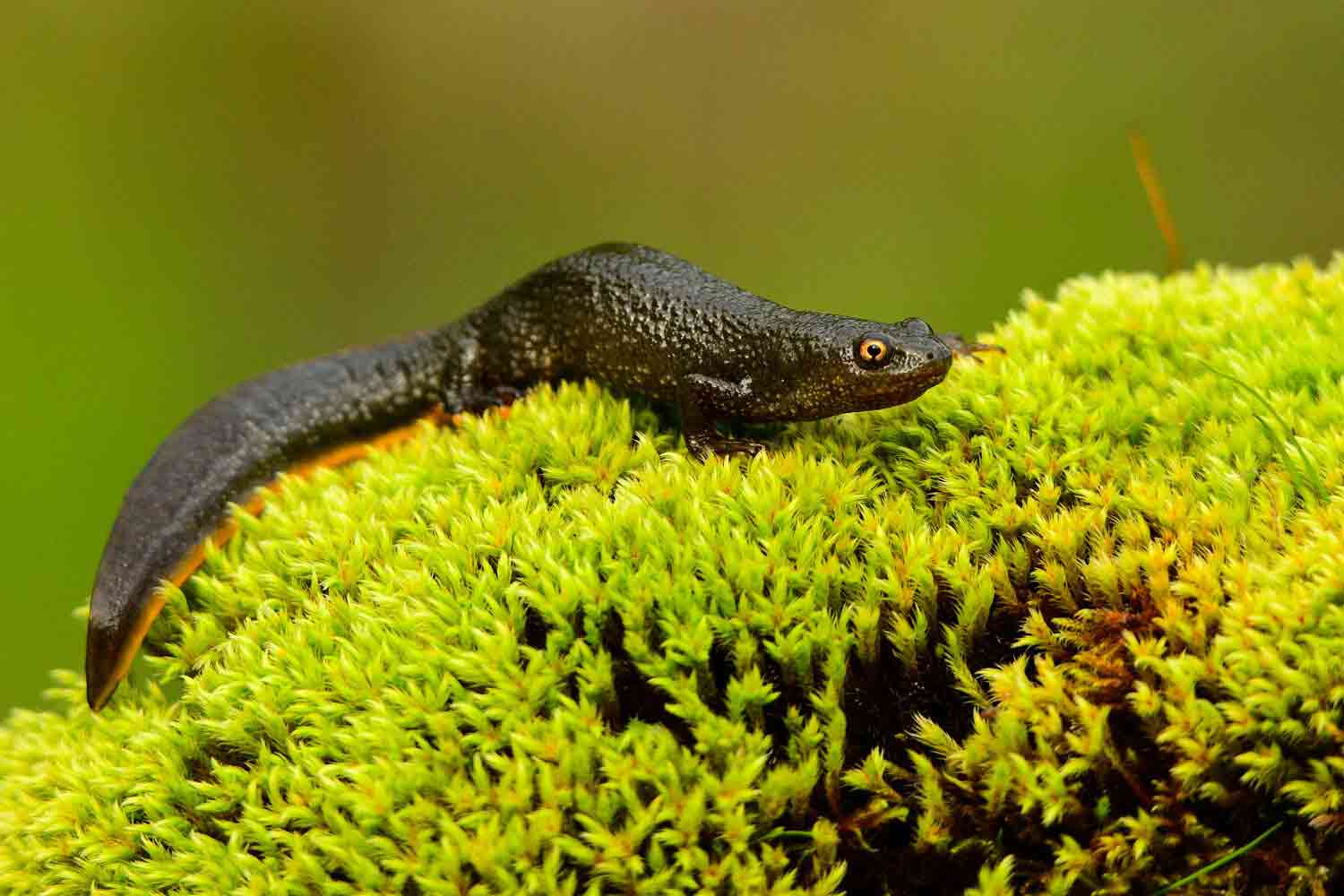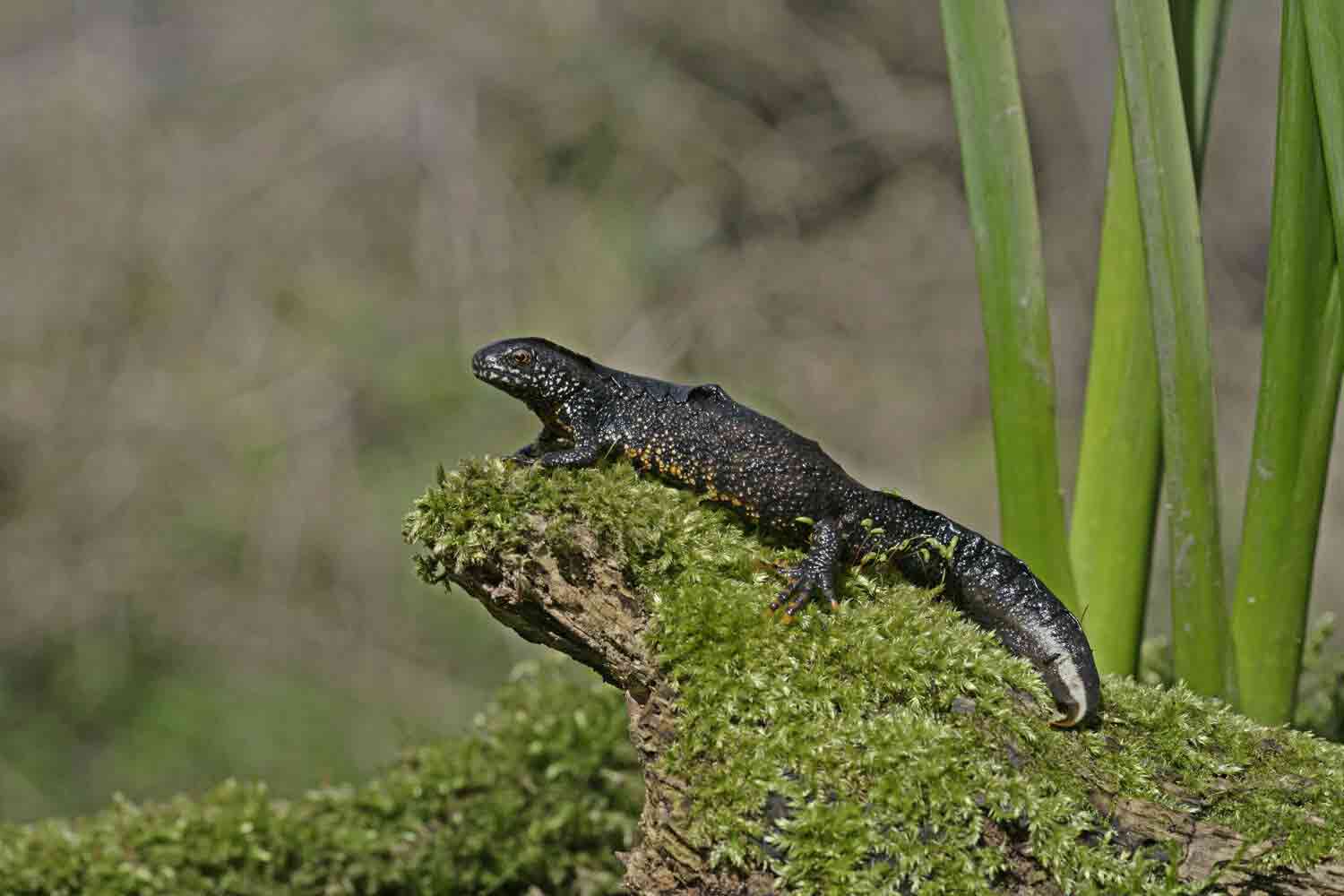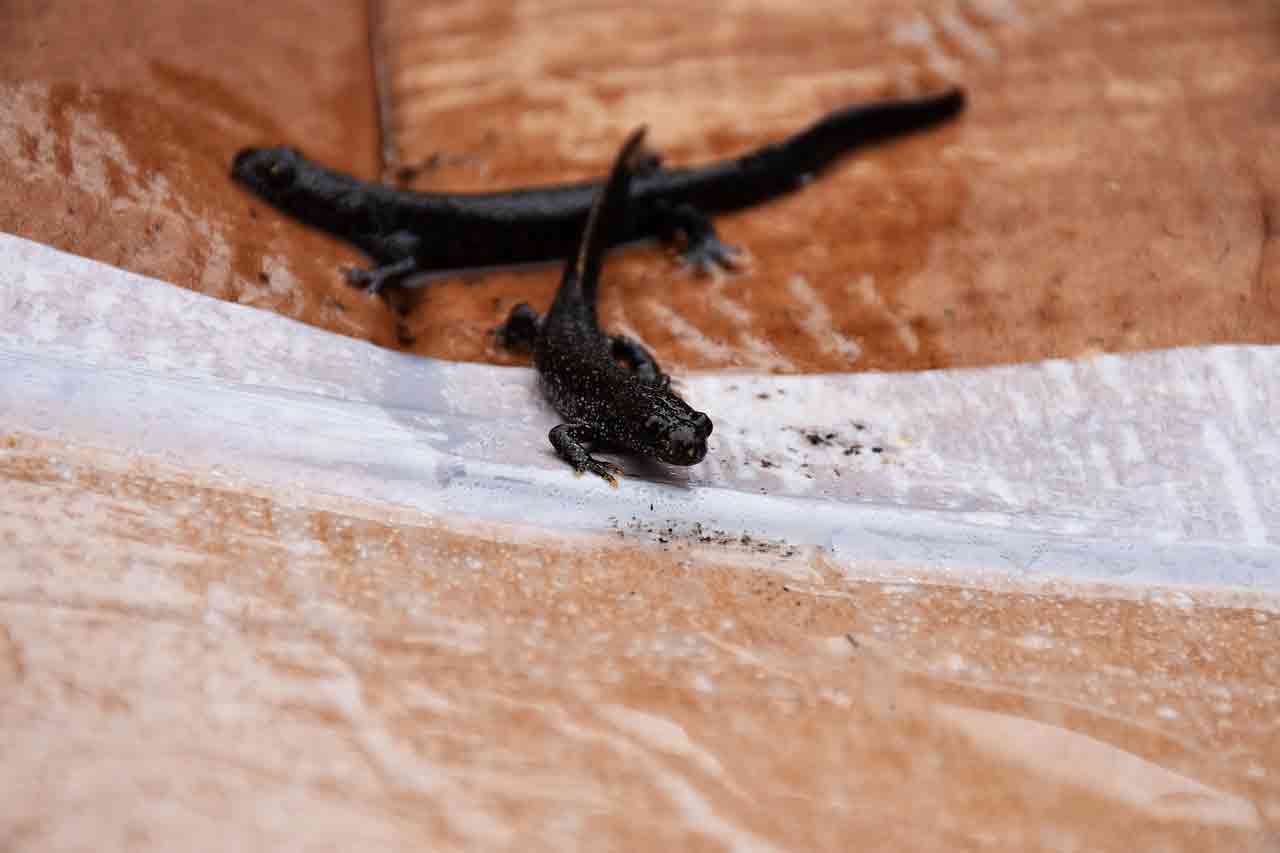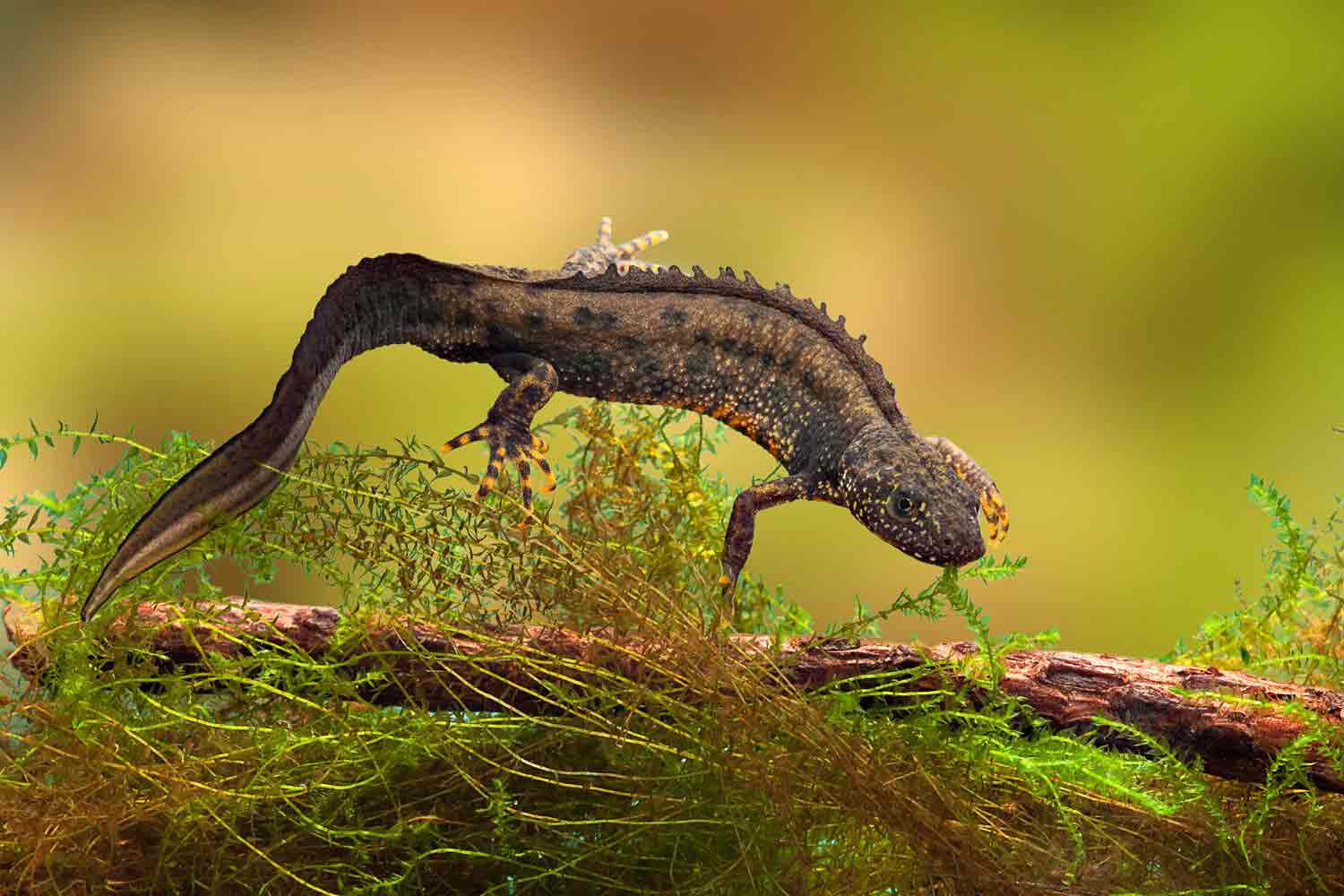Grest Crested Newt
Triturus cristatus
Life History
Length: 14 to 17cm
Weight: up to 40g
Diet: Insects, worms and small crustaceans
Average Lifespan: 6 to 15 years
When to see them: March to October
UK population: est. 400,000 in Britain
UK conservation status: Protected under schedule 5 of the Wildlife and Countryside Act 1981, and listed under Annex II and IV of the EU Habitats Directive due to its vulnerability. It is also considered a “Priority Species” under the UK Biodiversity Action Plan (UK BAP).

About
The great crested newt, one of the UK’s rarest amphibians, is well-known for its striking, dragon-like appearance during the breeding season. This protected species inhabits ponds, wetlands, and surrounding woodlands, playing a critical role in local ecosystems as both predator and prey. Males develop a distinctive, wavy crest along their backs and tails during the breeding season, which they use to attract mates.
Behaviour
Great crested newts have fascinating behaviors, especially during their breeding season in spring. Males put on elaborate underwater displays, waving their crest and tail to catch the attention of females. This courtship “dance” is unique and highly visual, often involving small flicks of the tail to waft pheromones towards the female, signaling their readiness to mate.
Great crested newts are also highly territorial. They spend most of their year on land, foraging for invertebrates like insects and worms, only returning to ponds during the breeding season. Unlike many other amphibians, they exhibit “site fidelity,” meaning they often return to the same ponds each year, if conditions allow. Their behavior is highly adapted to wetland habitats, where they can take cover and find both food and mateswhen faced with threats on land, they are known for a defense tactic called “unken reflex”, where they arch their backs and reveal their bright orange underbelly as a warning to potential predators. This vibrant display, signaling toxicity, helps keep some predators at bay.


Their Threats
Habitat Loss: Expansion of urban and agricultural areas has led to pond destruction and fragmentation of terrestrial habitats essential for feeding and overwintering.
Water Pollution: Chemical runoff from pesticides and fertilizers reduces water quality in breeding ponds, harming newt populations and their prey.
Invasive Species: Species such as non-native fish and the American bullfrog prey on or compete with newts, disrupting local ecosystems.
Climate Change: Changing temperatures and rainfall patterns can lead to drier conditions, impacting the availability of breeding sites.
How You Can Help
Protect Ponds: Advocate for the conservation of ponds and wetlands, especially those that serve as breeding sites for newts. This can be done by supporting local conservation groups or participating in wetland clean-up events.
Limit Chemical Use: Avoid pesticides and fertilizers near waterways, as they harm the delicate ecosystems that support great crested newts.
Create Wildlife-Friendly Gardens: Leaving piles of leaves, logs, or stones around the garden offers hiding and overwintering sites, keeping newts safe from predators and extreme weather. You can also create a pond. Even a small pond can be home to interesting wildlife!
Create or Support Wildlife Corridors: Newts often travel between ponds and other habitats, so creating “wildlife corridors” (e.g., leaving gaps in fences or hedges) allows them to move safely between areas without encountering as many barriers.
Drive Carefully Near Wetland Areas: Newts often cross roads between ponds, so cautious driving, especially during the breeding season, can help reduce road mortality.

Frequently Asked Questions
What should I do if I find a great crested newt in my garden pond?
Great crested newts are a protected species, so it’s best to leave them undisturbed. Their presence can indicate a healthy pond ecosystem. You can support them by keeping the area chemical-free and minimizing disturbances.
Why are great crested newts protected?
Habitat loss and pollution have led to significant declines in their population, making them vulnerable. European and UK legislation protects them and their habitats to prevent further decline.
Are great crested newts harmful to my fish or plants?
No, great crested newts pose no threat to fish or plants. They feed primarily on invertebrates and play a beneficial role in controlling garden pests. Keeping ponds without predatory fish can actually help newt populations thrive.
I think I found an injured great crested newt, what should I do?
- Contact a Local Wildlife Rescue or Specialist: Our emergency helpline is 01372 360404. They can guide you on immediate care and transportation and may advise you to bring the newt to them.
- Use a Small Container: If transportation is necessary, use a clean, well-ventilated container (like a small plastic box or Tupperware with holes). Line the bottom with a moist paper towel or damp moss to keep the newt comfortable, as they need moisture to avoid dehydration.
- Handle Gently: Avoid handling the newt directly, as their skin is delicate and absorbs oils and contaminants. Use a soft cloth or wear clean, moist gloves if handling is needed to move it into the container.
- Keep the Container in a Cool, Shaded Place: Newts are cold-blooded, so keep them in a shaded, cool area away from direct sunlight during transport. Avoid extreme temperature changes.
- Do Not Attempt to Treat Injuries: Unless advised by a specialist, don’t attempt any treatment. Newts have specific needs, and improper care can worsen their condition.